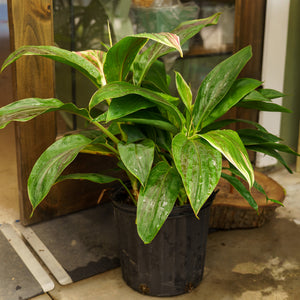The Cordyline Guide
Cordyline is a bold, tropical-looking plant valued for its colorful foliage and architectural form. With sword-like leaves in vibrant shades of red, green, pink, purple, and variegated patterns, Cordyline makes a striking addition to garden beds, containers, and indoor spaces. Though often treated as an annual in colder climates, Cordyline is a perennial in warmer zones and thrives both outdoors and in bright indoor settings. Here’s everything you need to know about growing and caring for Cordyline.
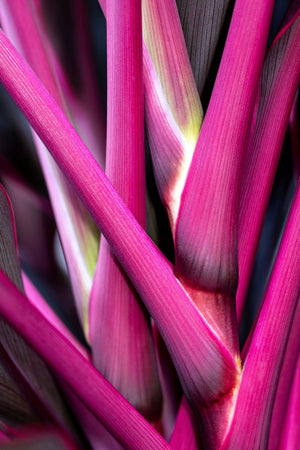
About
Cordyline is a genus of woody, evergreen plants in the Asparagaceae family, native to Southeast Asia, Australia, and the Pacific Islands. Commonly called ti plants or cabbage trees, Cordylines range in size from small container-friendly cultivars to tall, tree-like forms.
Popular varieties include Cordyline 'Red Star', with rich burgundy foliage and a palm-like silhouette; Cordyline 'Design-A-Line Burgundy', known for its gracefully arching leaves; and the vibrant Cordyline 'Torbay Dazzler', which features green leaves with creamy-yellow margins. The ‘Dance’ series—‘Dance Can Can’, ‘Dance Cha Cha’, and ‘Dance Salsa’—adds dynamic flair with vibrant pinks, reds, and purples. Compact selections like ‘Paso Double’ and ‘Renegade’ are well-suited for containers and small spaces.
Cordyline brings structure and tropical color to garden designs, whether used as a focal point, background plant, or accent in mixed containers.

PLANTING
Cordyline can be grown outdoors in warm climates or as a container plant that’s overwintered indoors in colder regions. Its upright habit and colorful foliage make it an excellent design anchor.
- USDA Hardiness Zones: Perennial in Zones 9–11. In colder zones, treat as an annual or overwinter indoors.
- Soil: Prefers well-drained soil enriched with organic matter. Slightly acidic to neutral pH is ideal.
- Sunlight: Thrives in full sun to part shade. Intense sun deepens foliage color, but some shade helps prevent leaf scorch.
- Watering: Keep soil evenly moist but not soggy. Allow the top inch of soil to dry between waterings.
- Spacing: Space 2–4 feet apart depending on the mature size of the variety.
- Planting Time: Plant in spring after the last frost. In containers, use a high-quality potting mix with good drainage.
When planting, dig a hole twice as wide as the root ball, set the plant at the same depth as it was in its container, backfill, and water thoroughly.
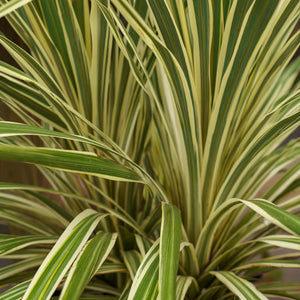
CARE
Cordyline is relatively low-maintenance, making it a great choice for both beginner and experienced gardeners. Proper care encourages vibrant foliage and healthy growth.
- Watering: Water regularly during the growing season. Reduce frequency in winter. Avoid waterlogging, especially in containers.
- Fertilizing: Apply a balanced liquid fertilizer every 4–6 weeks during spring and summer to support leaf color and vigor.
- Pruning: Remove damaged or dead leaves at the base to maintain a tidy appearance. Tall plants can be pruned to encourage bushier growth.
- Overwintering: Bring containers indoors before frost. Keep in bright, indirect light and reduce watering.
- Pests & Diseases: Watch for spider mites, scale, and mealybugs. Use insecticidal soap or neem oil as needed. Ensure good air circulation to prevent fungal issues.
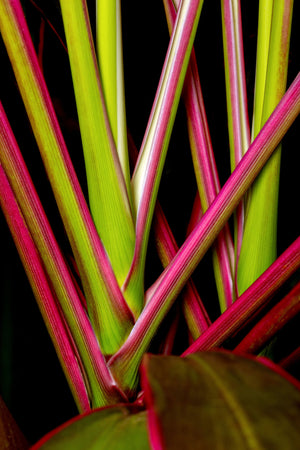
HOW TO USE
Cordyline’s dramatic foliage and upright form make it a versatile design element in both modern and tropical-style landscapes. Use it to add height, contrast, and year-round interest:
- Focal Points: Plant striking cultivars like ‘Red Star’ or ‘Torbay Dazzler’ as stand-alone features.
- Containers: Mix with trailing plants like sweet potato vine or dichondra for a high-impact patio display.
- Borders & Beds: Use in groupings or as a backdrop for lower-growing annuals and perennials.
- Indoor Decor: Smaller varieties thrive indoors with sufficient light and humidity.
- Tropical Themes: Pair with elephant ears (Colocasia), hibiscus, and canna lilies for a lush, island-inspired design.
Cordyline blends beautifully with companion plants that highlight its bold foliage, such as salvia, begonias, coleus, and ornamental grasses.
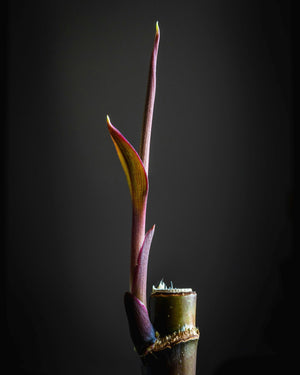
Common Questions
- Is Cordyline a perennial? Yes, Cordyline is a perennial in Zones 9–11, but it's grown as an annual or houseplant in colder zones.
- How to care for Cordyline plant? Provide bright light, regular watering, and balanced fertilizer. Prune dead leaves and protect from frost.
- Is Cordyline toxic to cats? Yes, Cordyline is toxic to cats and may cause vomiting or drooling if ingested.
- Is Cordyline toxic to dogs? Yes, Cordyline is mildly toxic to dogs and can cause similar symptoms.
- How to revive a dying Cordyline? Check for overwatering or underwatering, adjust light exposure, prune damaged foliage, and repot if rootbound.
- How big do Cordylines grow? Depending on variety, Cordylines can grow from 1–15 feet tall and 2–6 feet wide.
- How to propagate Cordyline plants? Propagate by stem cuttings placed in moist soil or water until roots develop.
Conclusion
Cordyline is a striking plant that brings height, structure, and vivid color to gardens and containers. With cultivars like ‘Red Star’, ‘Renegade’, and ‘Dance Can Can’, there's a Cordyline to suit any design style, from modern minimalism to tropical lushness. Easy to grow and care for, Cordyline offers year-round interest both indoors and out.
The Cordyline Collection
Sold Out
Sold Out
Sold Out
Sold Out
Sold Out
Sold Out






